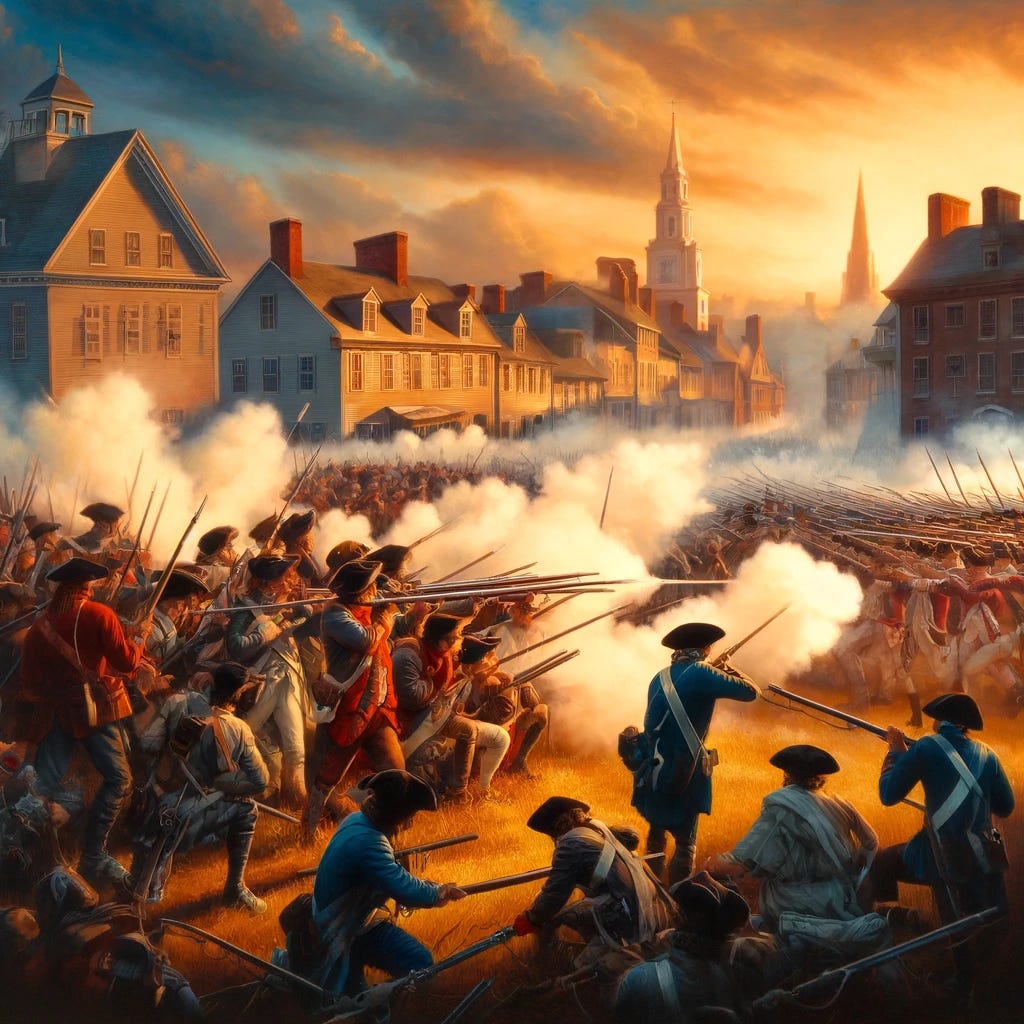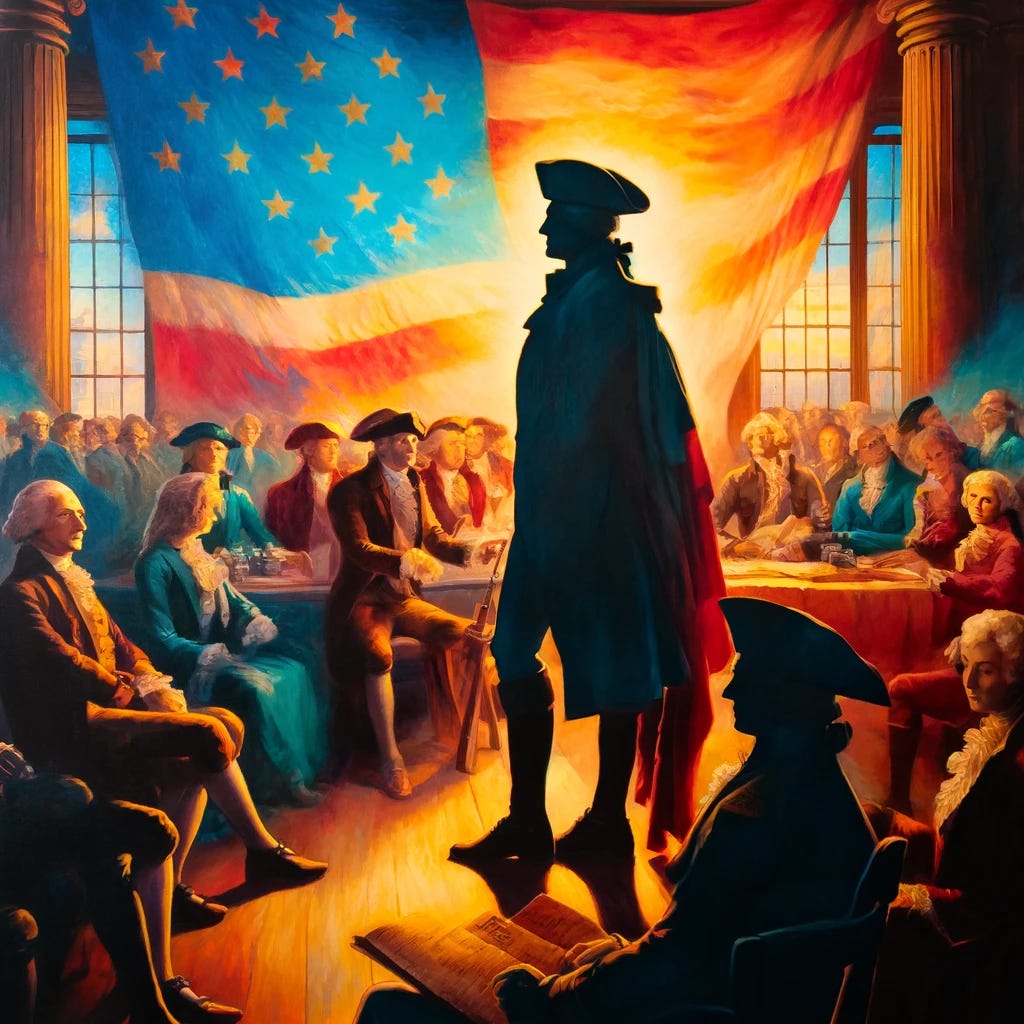Lexington, 19th April, 1775: Shots that lead to the Birth of USA
249 Years since the First Shots: Reflecting on the Pivotal Moment in American War of Independence.
The Dawn of Revolution
It was exactly 249 years ago, in the early morning of April 19, 1775—well before the French Revolution of 1789—when the tranquil towns of Lexington and Concord in Massachusetts became the epicenters of a conflict that would eventually birth a nation, the United States of America. This nation would not only continue to flourish and grow but also serve as a beacon for independence, free speech, and enterprise. The clash between British troops and colonial militias marked the outbreak of the American Revolutionary War, a pivotal moment propelled by years of mounting tensions and the desire for self-governance.
The Road to Revolution
The seeds of discontent were sown with policies like the Stamp Act of 1765 and the Townshend Acts of 1767, which imposed taxes on the colonies without their consent. This led to the rallying cry of "No Taxation Without Representation." The Boston Tea Party in December 17731 was a direct act of defiance against British taxation, seeing colonists dump an entire shipment of tea sent by the British East India Company into the harbor, setting the stage for a full-scale revolution.
Declaration of a New Dawn
The escalating conflict between the thirteen colonies and British rule reached a crescendo with the adoption of the Declaration of Independence on July 4, 1776, in Philadelphia. The colonies involved were New Hampshire, Massachusetts, Rhode Island, Connecticut, New York, New Jersey, Pennsylvania, Delaware, Maryland, Virginia, North Carolina, South Carolina, and Georgia. This seminal document, drafted by Thomas Jefferson, articulated the colonies' reasons for seeking independence, asserting the right to a government that was representative of the people's interests. It served as the magna carta of American freedom and laid the foundational principles of liberty for the nation. In many ways, the Declaration acted as a preamble to the U.S. Constitution that would be adopted eleven years later, in 1787, further shaping the governance and democratic ideals of the newly formed United States.
Unfurling the Stars and Stripes
The first American flag, commonly known as the "Stars and Stripes," was unveiled on June 14, 1777, after the Continental Congress passed a resolution establishing an official flag for the new nation. This historic event also took place in Philadelphia, the heart of American revolutionary activity. The original design featured thirteen stripes, alternating red and white, and thirteen white stars in a blue field, representing a new constellation. Each element symbolized the unity and equality of the original thirteen colonies. The flag's debut marked a significant moment in American history, embodying the nation's struggle for independence and its hopes for the future.
The War for Independence
The war, stretching from 1775 until 1783, was a grueling battle for control. The turning point came with the American victory at Yorktown in 1781, where British General Cornwallis surrendered to George Washington, effectively ending major combat operations. The Treaty of Paris, signed in 1783, officially recognized the sovereignty of the United States.
Foundations of a Nation
Post-war, the United States faced the monumental task of building a nation. The Articles of Confederation initially guided the nascent country, but it soon became evident that a stronger, more effective national government was required. This led to the drafting of the U.S. Constitution in 1787, which established the federal system in place today. George Washington, a unifying figure who had led the Continental Army to victory, was unanimously elected as the first President of the United States.
A Legacy of Resilience and Leadership
Today, as we reflect on the 250th anniversary of those first shots that echoed across Lexington, we also celebrate the enduring spirit of American resilience. The United States has maintained its global leadership role in politics and economics, underscored by the continued dominance of the dollar. Investor Warren Buffett encapsulated this sentiment perfectly when he said, "Never bet against America." This resilience and capacity to lead, demonstrated through centuries of challenges and triumphs, continue to define the American ethos.
This milestone is not just a commemoration of a historic battle; it's a celebration of American tenacity and its ongoing influence across the globe.
Boston Tea Party: Did India Brew the American Revolution Against the British Rule?
Personal Journey: Boston 2013 vs Boston 1773 In June 2013, while attending a two-week training at Harvard Kennedy School of Government in Cambridge, Massachusetts, I delved into the history of the Boston Tea Party. Cambridge, a lively town neighboring Boston and divided by the Charles River, is steeped in American his…








